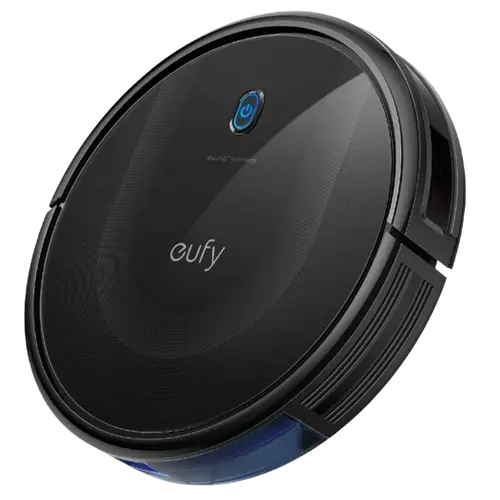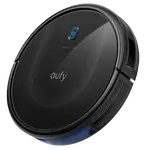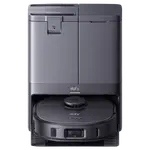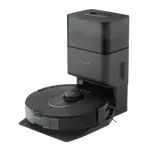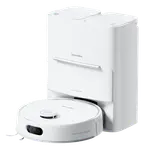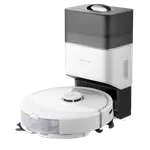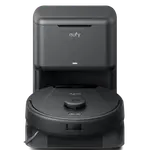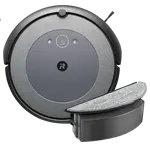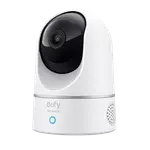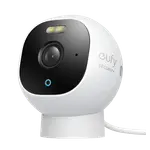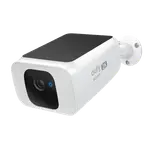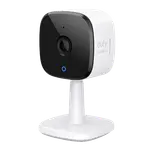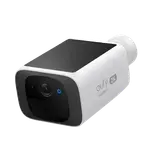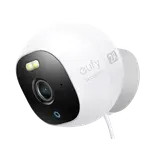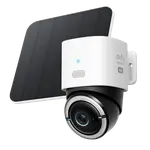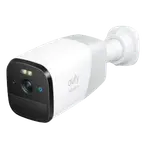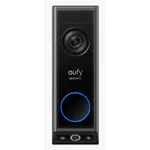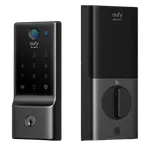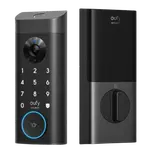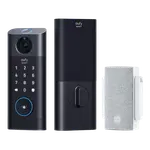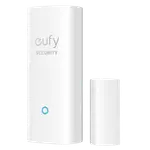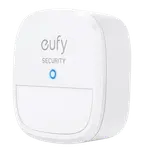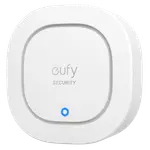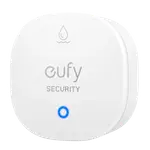Eufy
11S MAX
Launch Year: 2019
Summary
Size & Materials: Vacuum Dimensions (325 x 325 x 72.5 mm)
Power: Auto Recharge
Navigation: Obstacle Detection, Cliff Detection
Suction & Performance: Carpet Cleaning, Side Brushes
Features: Onboard Dustbin Capacity (600ml), Noise Level (55dB), Scheduling
Price History
Loading price history...
| Brand | Eufy |
|---|---|
| Headquarters | |
| Website | https://www.eufy.com |
| @EufyOfficial |
Size & Materials
Length x Width x Height
- Length: the longest side of the device
- Width: the shorter side of the device
- Height: the vertical dimension of the device
325 x 325 x 72.5 mm
Weight of the robot vacuum unit itself.
Vacuum weight affects maneuverability, battery life, and the ability to clean under low furniture.
?
Length x Width x Height
- Length: the longest side of the device
- Width: the shorter side of the device
- Height: the vertical dimension of the device
?
Weight of the charging/emptying dock station.
Dock weight indicates stability and the sophistication of features like self-emptying mechanisms.
?
Power
Indicates how long the robot can clean on a single charge.
100 minutes
Time required to fully recharge the battery.
6 hours
Indicates if the robot automatically returns to its dock to recharge when the battery is low.
YES
Connectivity
Range: The 2.4 GHz band offers a longer range, meaning it can cover larger areas and penetrate solid objects like walls more effectively than 5 GHz.
Speed: Generally, 2.4 GHz provides slower speeds compared to 5 GHz due to a lower maximum data rate.
Interference: More prone to interference since many other devices (like cordless phones, microwaves, and Bluetooth devices) operate on the 2.4 GHz frequency, leading to potential congestion and slower network performance.
NO
Range: Offers a shorter range compared to 2.4 GHz and may have difficulty penetrating walls and other obstacles.
Speed: Typically provides faster speeds and higher data rates due to more available bandwidth.
Interference: Less prone to interference as fewer devices operate on this frequency, leading to a more stable connection.
NO
Bluetooth is a wireless communication technology used for exchanging data over short distances.
Bluetooth enables devices to communicate wirelessly within a short range, typically up to 10 meters (about 33 feet) for most consumer devices.
NO
Zigbee is a wireless communication protocol designed for low-power, short-range applications, commonly used in smart home devices, industrial automation, and other areas requiring reliable, low-data rate communication. It features low power consumption, making it ideal for battery-operated devices, and supports short-range communication, typically up to 100 meters. Zigbee employs mesh networking, allowing devices to relay data through each other to extend range and improve reliability. It supports data rates up to 250 kbps, suitable for small data packets, and ensures interoperability among devices from different manufacturers if they conform to Zigbee standards. Security is robust, with AES-128 encryption for data protection.
Z-Wave is known for its low power consumption, making it ideal for battery-powered devices. It supports a mesh networking topology, allowing devices to communicate with each other directly or through intermediary nodes, thus extending the overall network range and enhancing reliability. The protocol supports data rates of up to 100 kbps, suitable for transmitting control commands and sensor data.
NO
Zigbee is a wireless communication protocol designed for low-power, short-range applications, commonly used in smart home devices, industrial automation, and other areas requiring reliable, low-data rate communication. It features low power consumption, making it ideal for battery-operated devices, and supports short-range communication, typically up to 100 meters. Zigbee employs mesh networking, allowing devices to relay data through each other to extend range and improve reliability. It supports data rates up to 250 kbps, suitable for small data packets, and ensures interoperability among devices from different manufacturers if they conform to Zigbee standards. Security is robust, with AES-128 encryption for data protection.
Zigbee devices need a Zigbee-compatible hub to connect and communicate with other devices in your smart home setup.
NO
Thread is a wireless communication protocol designed specifically for Internet of Things (IoT) devices, providing secure, reliable, and scalable networking. Unlike some other protocols, Thread is IP-based, which means it can seamlessly integrate with existing internet infrastructure. It operates in the 2.4 GHz frequency band and uses mesh networking to enhance reliability and extend range by allowing devices to relay data through each other.
Thread is optimized for low power consumption, making it suitable for battery-operated devices. It supports low-latency communication, which is crucial for real-time applications like home automation and security systems. The protocol ensures high security with AES-128 encryption and end-to-end security at the network layer. Thread also supports over-the-air updates, ensuring devices can stay up to date with the latest features and security patches.
Thread-enabled devices require a Thread Border Router (such as certain smart home hubs or routers) to connect to your home network and other Thread devices.
NO
Integrations
Google Home serves as a central hub for a variety of smart devices, including lights, thermostats, cameras, and speakers. It leverages Google Assistant for voice control, enabling users to manage their smart home with simple commands.
NO
Amazon Alexa is one of the most widely used smart home systems, known for its compatibility with a vast array of devices. Users can control everything from smart lights to appliances using voice commands through Echo devices.
NO
Apple HomeKit is designed for users in the Apple ecosystem, providing a seamless way to control compatible smart devices through iOS devices using the Home app or Siri. It emphasizes security and user privacy.
NO
SmartThings is a flexible platform that connects a wide range of devices from different brands, offering a unified interface for control. It supports various communication protocols, allowing for extensive device compatibility.
NO
Home Assistant is an open-source platform that allows for extensive customization and integration of a wide variety of smart devices. It supports a multitude of protocols and brands, making it ideal for tech-savvy users.
NO
IFTTT (If This Then That) is a web-based service that allows users to create simple automation sequences, known as applets, which enable different devices, services, and applications to work together seamlessly. It connects a wide range of products and services, facilitating interoperability and enhancing functionality.
NO
Matter is a unified, open-source connectivity protocol designed to standardize and simplify communication between smart home devices from different manufacturers. Developed by the Connectivity Standards Alliance (formerly the Zigbee Alliance), Matter aims to improve interoperability, security, and reliability across various smart home ecosystems.
Matter operates over existing networking technologies, including Ethernet, Wi-Fi, and Thread, providing flexibility in device connectivity. Its IP-based nature allows seamless integration with existing internet infrastructure and cloud services. Matter uses a mesh networking topology, particularly when operating over Thread, to enhance range and reliability by allowing devices to relay data through each other.
Security is a cornerstone of Matter, with end-to-end encryption and secure device onboarding processes ensuring robust protection for data and privacy. Matter also supports over-the-air updates, allowing devices to stay current with the latest features and security enhancements.
NO
Navigation
Laser Navigation (LiDAR): Uses laser-based LiDAR for precise mapping and navigation, ideal for complex layouts.
Camera-Based Navigation (VSLAM): Uses cameras and visual simultaneous localization and mapping (VSLAM) for navigation.
Gyroscope Navigation: Relies on gyroscopes and sensors for basic navigation, less precise than LiDAR or VSLAM.
?
Detects and avoids obstacles like furniture or cables.
YES
Prevents the robot from falling down stairs or ledges.
YES
Can map and navigate multiple rooms or floors, often with zone cleaning options.
NO
Allows users to set virtual boundaries to restrict the robot's cleaning area.
NO
Suction & Performance
Measured in Pascals (Pa), indicates the strength of the vacuum's suction. Higher values mean better debris pickup, especially on carpets.
2000Pa
Specialized features and power for effective carpet cleaning.
Carpet cleaning capability includes stronger suction and brush systems designed for deep carpet cleaning.
YES
Number of side brushes (e.g., 1 or 2) that help sweep debris from edges and corners into the vacuum's path.
YES
Mopping
Indicates if the robot vacuum includes a mopping feature for hard floors.
NO
Measured in milliliters, indicates the capacity of the water tank for models with mopping functionality.
-
Indicates if the water tank supports the use of cleaning detergents for enhanced mopping.
-
Automatic dispensing of cleaning solution during mopping operations.
Auto detergent dispensing ensures consistent cleaning results without manual intervention.
-
Automatic cleaning of the mop pad at the dock station.
Auto mop washing maintains cleaning effectiveness and hygiene by cleaning the mop between uses.
-
Automatic drying of the mop pad to prevent odors and bacteria growth.
Auto mop drying prevents mold and bacteria growth, maintaining hygiene and extending mop life.
-
Automatically lifts the mop pad when carpets are detected to avoid wetting them.
-
Features
Measured in liters or milliliters, indicates how much debris the vacuum can hold before needing to be emptied.
600ml
Automatically empties its dustbin into a base station, reducing manual maintenance.
NO
Storage capacity of the self-emptying dock's dust collection bin.
Larger dock capacity means less frequent manual emptying, improving convenience.
-
Measured in decibels (dB), indicates how quiet or loud the vacuum is during operation.
55dB
Allows users to monitor the robot's location and cleaning progress in real-time through the mobile app.
NO
Allows users to set cleaning schedules via the app or device, automating regular cleanings.
YES
Prevents children or pets from accidentally starting or altering the robot's settings.
NO
Compare robot vacuums by suction power, navigation, mopping, battery life, self-emptying, connectivity, smart features, and app integrations.
![Eufy Indoor Cam E220]() Eufy
EufyIndoor Cam E220
![Eufy Outdoor Cam E210]() Eufy
EufyOutdoor Cam E210
![Eufy SoloCam S230]() Eufy
EufySoloCam S230
![Eufy Indoor Cam C120]() Eufy
EufyIndoor Cam C120
![Eufy SoloCam S220]() Eufy
EufySoloCam S220
![Eufy Outdoor Cam E220]() Eufy
EufyOutdoor Cam E220
![Eufy 4G LTE Cam S330]() Eufy
Eufy4G LTE Cam S330
![Eufy 4G Camera S230]() Eufy
Eufy4G Camera S230
![Eufy Video Doorbell C31 (with Battery Pack)]() Eufy
EufyVideo Doorbell C31 (with Battery Pack)
![Eufy Video Doorbell E340]() Eufy
EufyVideo Doorbell E340
![Eufy Smart Lock C220]() Eufy
EufySmart Lock C220
![Eufy Video Smart Lock E330]() Eufy
EufyVideo Smart Lock E330
![Eufy Video Smart Lock S330]() Eufy
EufyVideo Smart Lock S330
![Eufy Entry Sensor]() Eufy
EufyEntry Sensor
![Eufy Motion Sensor]() Eufy
EufyMotion Sensor
![Eufy 11S MAX]() Eufy
Eufy11S MAX
![Eufy X10 Pro Omni]() Eufy
EufyX10 Pro Omni
![Eufy L60 with Self-Empty Station]() Eufy
EufyL60 with Self-Empty Station
![Eufy Security Siren]() Eufy
EufySecurity Siren
![Eufy Water and Freeze Sensor]() Eufy
EufyWater and Freeze Sensor

